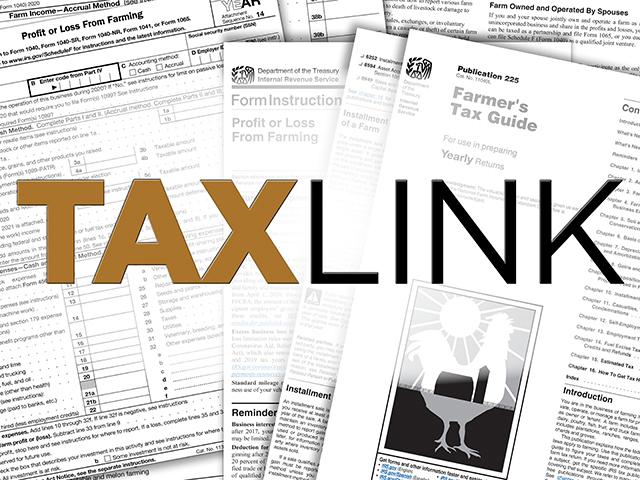Taxlink
Green Book Outlines President's Tax Proposals
I'm writing this column in March.
While most of you are watching the March Madness tournament, we tax folks are knee-deep into returns. Occasionally, we will take a break to read the recently published "Green Book." The Green Book is the president's budget for the upcoming fiscal year. Contained within the Green Book are tax proposals that "pay" for the various budget items. There is little chance that most of the tax proposals will get passed, but it's good to understand where President Joe Biden and his party would like to see the country go. Here are a few highlights that could affect farming.
-- For individuals with more than $400,000 in adjusted gross income, the Net Investment Income Tax (NIIT) would trigger on the excess. Also, the NIIT tax currently stands at 3.8%. The proposal is to increase it to 5%. Basically, earned income would be subject to either NIIT or Medicare tax on amounts over $400,000.
-- Raise the top tax rate from 37% to 39.6%. But, factoring in the proposed NIIT surtax, the effect rate would be 44.6%.
-- Make permanent the excess business loss rules. Currently, if you have a business loss in excess of $289,000â??/â??$578,000 (single and married filing jointly), you can only deduct up to $289,000â??/â??$578,000 to offset nonbusiness income. The rest is carried forward as a net operating loss (NOL). However, remember that NOLs don't offset farm income (on Schedule F or entity returns), so even though the NOL might wipe out 80% of taxable income, you still might be left with a substantial self-employment tax bill.
P[L1] D[0x0] M[300x250] OOP[F] ADUNIT[] T[]
-- Raise C corporation tax rates to 28%. Back in 2017, there was a tiered structure where most farmers only paid 15% corporate tax rates. This was changed to a 21% flat tax in 2018. If this goes through, it's yet another reason to try to change to an S corporation.
-- Treat all capital gains and dividends as ordinary income for those with more than $1 million in taxable income. This comes into play when a farmer sells land (capital gains asset). Currently, the highest capital gains tax rate is 20% plus 3.8% NIIT. Factoring in the proposed change to the highest tax bracket and increased NIIT tax, this would be an additional increase of 20.8% in tax rate -- almost double current rates.
-- Eliminate the "backdoor ROTH" strategy.
-- Make child tax credits refundable like in 2021. Basically, pay you to have kids.
-- Limit the gain deferral for 1031 (like-kind exchanges) to $500,000 single or $1 million married filing joint. This could have a substantial impact on land prices, not to mention create huge tax liabilities when farmers sell land.
-- Increase special-use valuation to $13 million per taxpayer. However, there is no stepped-up basis for the exempt amounts.
As you can see, many of these are recycled proposals from prior years. However, the message is clear: More taxes in various forms are on the president's agenda.
**
-- DTN Tax Columnist Rod Mauszycki, J.D., MBT, is a tax principal with CLA (CliftonLarsonAllen) in Minneapolis, Minnesota.
-- Read Rod's "Ask the Taxman" column at https://www.dtnpf.com/…
-- You may email Rod at taxman@dtn.com
[PF_0523]
(c) Copyright 2023 DTN, LLC. All rights reserved.




